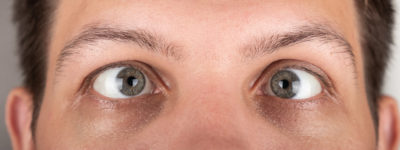What are the kind of common eye drops?
There are various eye drops available, ranging from over the counter (OTC) eye drops to eye drops which will be dispensed with proper prescription only. The commonly used eye drops are discussed below:
Lubricating eye drops for dryness/ burning eyes
The safest eye drops which can be purchased over the counter and used safely are the lubricating eye drops which provide moisture and supplement the natural tears and help the tear film work more effectively to protect the surface of the eye. The common ones are
- Carboxymethylcellulose ( CMC)
- Hydroxy propyl methyl cellulose ( HPMC)
- HPMC + Glycerin
- Polyethylene glycol + Propylene Glycol
- Sodium hyaluronate
Eye drops for infection
When one has eye infection causing redness, tearing and discharge antibiotic drops may be used as first line of management as emergency before visiting the ophthalmologist. The commonly used ones are
- Ciprofloxacin
- Oflaxacin
- Gatifloxacin
- Moxifloxacin
- Tobramycin
Eye Drops allergy
When one encounters itchy, watery eyes anti allergy eye drops may be indicated. The common ones are :
- Olapatadine
- Sodium cromoglycate
- Bepotastine
- Ketorolac
- Low potency steroids like Fluromethalone
How to apply the drops
Preparing the Drops
- Always wash your hands before handling your eye drops or touching your eyes.
- If you’re wearing contact lenses, take them out — unless your ophthalmologist has told you to leave them in.
- Shake the drops vigorously before using them.
- Remove the cap of the eye drop medication.
- Do not touch the dropper tip.
Putting in Eye Drops
- Tilt your head back slightly and look up. Some people find it helpful to focus on a specific point on the ceiling.
- Use one hand to pull your lower eyelid down, away from the eye. This forms a pocket to catch the drop.
- Hold the dropper tip directly over the eyelid pocket.
- Squeeze the bottle gently and let the eye drop fall into the pocket.
- Don’t touch the bottle to your eye or eyelid. This can give bacteria or other contaminants a chance to grow in your eye drops.
After You’ve Put in Eye Drops
- Close your eyes and do not blink.
- Apply gentle pressure to your tear ducts, where the eyelid meets the nose.
- Hold the tear ducts closed for a minute or two—or as long as your ophthalmologist recommends—before opening your eyes. This gives the drop time to be absorbed by the eye, instead of draining into your nose.
- Wipe any unabsorbed drops from your closed lids with a tissue.
- Repeat the same procedure with the other eye, if necessary.
- Wash your hands after handling medication and touching your face.
More Tips for Using Eye Drops
- If you need to take more than one type of eye drop at the same time, wait three to five minutes between the different kinds of medication.
- Use your drops exactly when and how your doctor tells you to.
- Ask your ophthalmologist or pharmacist if it’s OK to keep the drops in the refrigerator. When the drops are cold it might be easier to feel the drop when it hits the eye, so you can tell where it has landed.
- If you have a lot of trouble putting in your eye drops, ask a caregiver or family member to help.
- Several kinds of eye drop assistance devices are available. They can help with aiming the drop, squeezing the bottle and even keeping the eye open. Ask your eye care professional about what options might be right for you.
If you develop redness, irritation or itching after putting drops, stop the drops and consult your eye doctor









